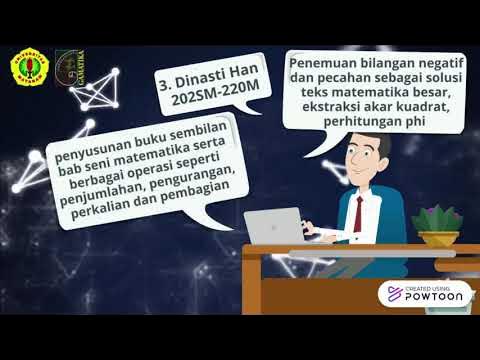History of Math Renaissance
Summary
TLDRThe video explores the evolution of mathematics from the Renaissance through the 17th century, highlighting key developments such as the introduction of the decimal system by the Abbasis, the discovery of cubic equations, and advancements in trigonometry and algebra. It discusses the contributions of figures like Copernicus in astronomy and Pascal in probability, as well as the foundation of calculus by thinkers like Descartes and Cavalieri. Overall, it showcases how these mathematical breakthroughs shaped the understanding of numbers, geometry, and the universe.
Takeaways
- 😀 The Renaissance increased the demand for mathematics due to complex business structures, leading to the formation of the Abbacus group.
- 😀 The Abbacus group taught merchants the decimal system and advanced symbol usage in the 14th century.
- 😀 Key developments in algebra included Dardi's cubic equation and early work with negative powers by Michael Stifel.
- 😀 The first algebra textbook written in English emerged during the Renaissance, showcasing advancements in mathematical education.
- 😀 Notable mathematicians like Del Ferro, Cardano, and Bombelli contributed to solving cubic equations and introduced imaginary numbers.
- 😀 Trigonometry gained prominence in Renaissance art, exemplified by works like 'The Last Supper', which utilized geometry for perspective.
- 😀 John Napier published the first table of logarithms, laying groundwork for later developments by Henry Briggs, who created a base-10 log table.
- 😀 Astronomy saw major shifts with Copernicus proposing heliocentrism and Kepler defining elliptical orbits.
- 😀 The 17th century introduced key figures in algebra and geometry, including William Oughtred and René Descartes, who developed the Cartesian coordinate system.
- 😀 Probability theory began to take shape with Pascal's Triangle and contributions from mathematicians like Huygens and Fermat.
Q & A
What role did mathematics play during the Renaissance?
-Mathematics became increasingly important due to the complexities of business structures, leading to advancements in numerical systems and teaching methods.
Who were the Abbasis, and what did they contribute to mathematics?
-The Abbasis were a group formed in the 14th century that taught merchants the decimal system and advanced the use of mathematical symbols.
What significant mathematical work did Cardano publish?
-Cardano published work on solving cubic equations, building on earlier discoveries by mathematicians like Del Ferro.
What was unique about the first algebra textbook written in English?
-It marked the beginning of algebra being taught in English, making it more accessible to English-speaking students.
How did Renaissance art incorporate trigonometry?
-Artists used trigonometry to achieve perspective and depth in their works, as exemplified by the painting 'The Last Supper.'
What contribution did John Napier make to mathematics?
-John Napier published the first table of logarithms, laying the groundwork for later developments in logarithmic calculations.
What were Copernicus's beliefs regarding the solar system?
-Copernicus proposed that the Earth revolved around the Sun, challenging the geocentric model of the universe.
What is the significance of Pascal's Triangle in probability?
-Pascal's Triangle is foundational for understanding combinations and probabilities, as it illustrates the relationships between binomial coefficients.
What is the Fundamental Theorem of Calculus, and who contributed to its development?
-The Fundamental Theorem of Calculus connects derivatives and integrals, and it was developed through the work of several mathematicians, including Wallace and Cavalieri.
What advancements did René Descartes make in geometry?
-René Descartes is credited with creating the Cartesian coordinate system, which allows algebraic equations to be represented graphically.
Outlines

This section is available to paid users only. Please upgrade to access this part.
Upgrade NowMindmap

This section is available to paid users only. Please upgrade to access this part.
Upgrade NowKeywords

This section is available to paid users only. Please upgrade to access this part.
Upgrade NowHighlights

This section is available to paid users only. Please upgrade to access this part.
Upgrade NowTranscripts

This section is available to paid users only. Please upgrade to access this part.
Upgrade NowBrowse More Related Video

IKS Lecture Ancient Mathematics 1

Ilmuwan ISLAM Mempermudah Memahami Matematika, Geometri, Trigonometri hingga ALGORITMA

A história continua | Os Mistérios da Matemática #4

SEJARAH MATEMATIKA: China

Al Khawarizmi - Bapak Algoritme Dunia | Tarikhpedia | Helmy Yahya Bicara

Ep. 35 - O ILUMINISMO E A SOCIEDADE
5.0 / 5 (0 votes)